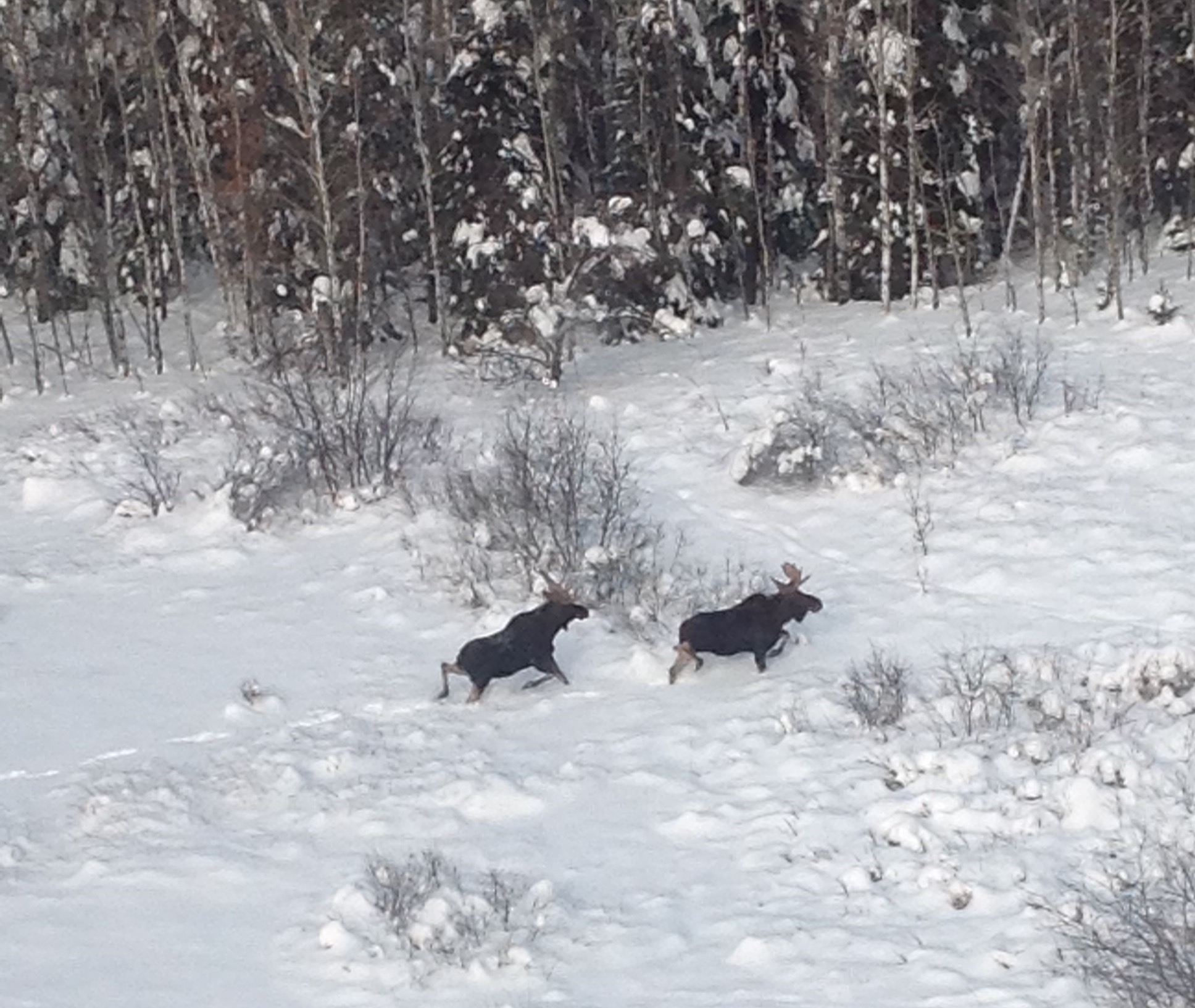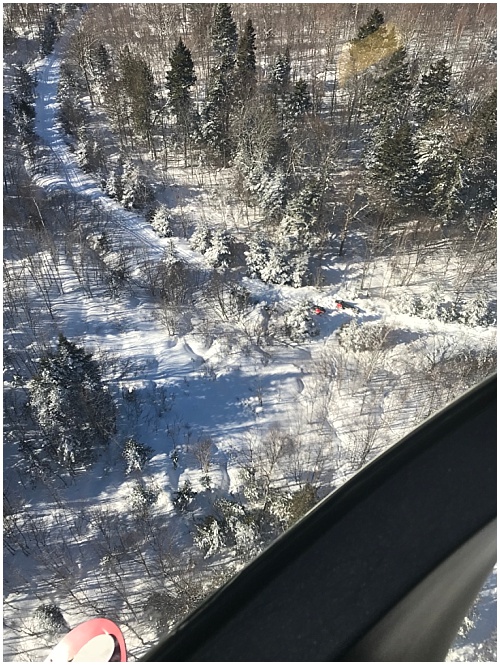April 21, 2021 at 3:56 pm

If you spent any time snowmobiling in certain areas of northern Maine this winter, you may have looked up to see a low flying helicopter scouting over the trees. This helicopter carried one Forest Pilot Ranger of the Maine Forest Service and three of Maine’s wildlife biologists, including the moose biologist, Lee Kantar on their annual aerial moose counts. From late December to mid-February, having snow on the ground allows greater contrast of moose on the landscape, making it easier to spot them while flying. The helicopter flies over specific sections in districts that best represent Maine’s core moose range and habitat.
In one survey, biologists count the number of moose spotted, providing an idea of the general number of moose in the core range. On another day, the crew conducts aerial surveys looking at the sex and age of individual moose that are spotted from the chopper, helping to demonstrate calf recruitment (the number of calves living to be one year old) and assists in monitoring the age and sex structure of the population.

In early January, a helicopter took to the sky for some more involved moose work. Native Range Wildlife Capture Services attached GPS collars to 70 ~8-month-old calves across Wildlife Management District (WMD) 4. Once a calf was spotted, the crew used a net gun to capture the moose and quickly land the helicopter. Within 10 minutes, the calf was gently tied, provided a face mask to calm it down, weighed, collared, a blood sample is taken, and then the calf is released. This data provides biologists a starting point for the calf’s health and the collar allows daily monitoring of movement and a mortality signal. The Department has been collaring moose for several years to assess and compare mortality rates of calves living through their first winter.
In early spring, biologists respond to any mortality signals sent out by the GPS collars, allowing greater insight into the cause of death and impact on the population. This invaluable data provides information on individual and population health and has been the key component to implementing the adaptive management unit for the 2021 hunting season. The adaptive management unit will help determine if lowering moose densities can break or lessen the winter tick cycle ultimately improving the health of Maine’s moose. Learn more about the adaptive management unit and supporting research here.
To continue learning more about Maine’s ongoing moose study, winter tick, and Maine’s moose population, visit mefishwildlife.com/wintertick.
Read other blogs about Maine’s moose:
Required Moose Stations and Vital Data Collection
Maine’s Dynamic Moose Study: An Overview of Maine’s Seasonal Moose Research
Moose Survival Study Continues with a Focus on Winter Tick
Or listen to the latest podcast series, Maine’s Moose. To listen, visit mefishwildlife.com/changers or search “Fish and Game Changers” on your favorite podcast app.